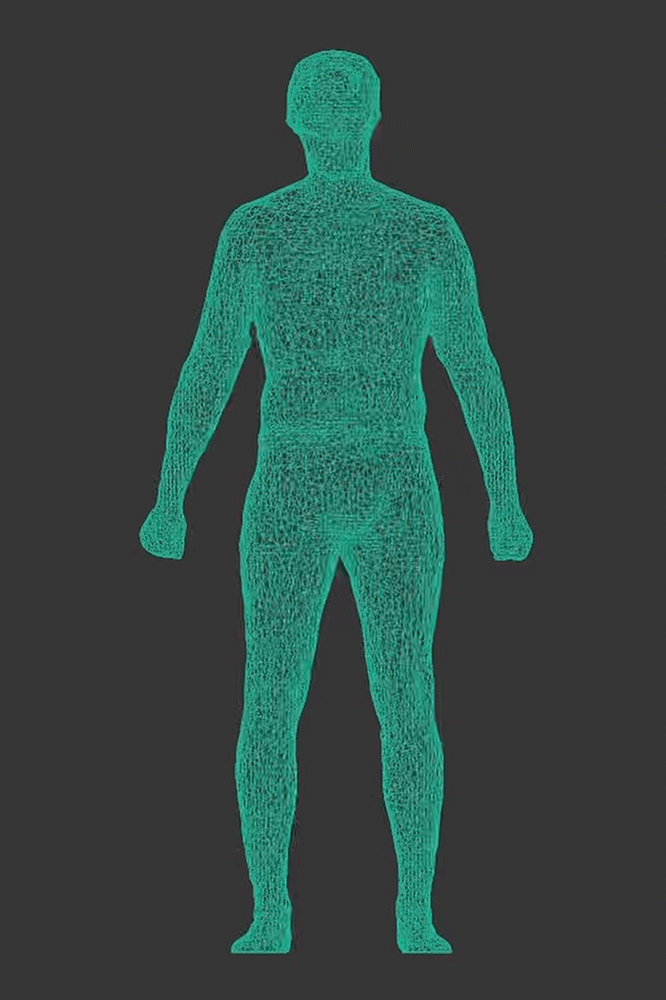Human Digital Twin
In the context of DSTL’s Serapis SSE Framework Agreement, we were tasked by Qinetiq Training and Simulation to investigate the key technologies required for a human digital twin concept demonstrator. ‘SSE’ stands for Simulation and Synthetic Environments Excellence. This included the full digital 3D capture of a body scan that needed to be highly precise & accurate, meeting at least the ISO 20685:2010 standard (scanning), modelling (rigging), followed by visualisation and articulation of the model (syncing).
Below the 3 steps:
Scanning
A research paper on the required ISO 20685:2010 standard was our start. We contacted the authors of the paper who had developed an algorithm called Gryphon which was said to be ISO compliant. We hired the body scanner used by the authors of the paper, called SizeStream SS20. Below our virtual 3D model of the scanner, including the scanned participant in action.
5 consecutive scans were taken with the Gryphon method. The Gryphon algorithm discards outlier measurements during this process to increase accuracy of the final results. The SizeStream software then generates a 3D point cloud for each of the 5 scans. Below the raw point cloud output of one of the scans. Note the handholds and scanner hardware are still visible. A surface mesh is generated from the point cloud data. This surface mesh is used for all further steps in the generation of a digital twin.
We compared the surface meshes generated from the 5 consecutive scans which we overlayed in 3D in 5 different colours to check accuracy. Most of the differences are a result of the participant moving slightly in the 1-second interval between scans, however scanning artifacts are visible on the left arm of the 5th (blue) scan.
Rigging
Next the 3D surface scan needed to be rigged. A skeletal rig is a digital representation of the key bones of the human skeleton.
Syncing
We chose the Rokoko Smartsuit as the source of motion capture data to be used for the synchronisation of the Digital Twin. The skeletal rig animation data produced by Rokoko Studio can be consumed by a wide variety of commercial 3D modelling software.
Conclusion
Digitally twinning a human is possible with the technology available today as we showcased with this initial concept demonstrator within a very short timeframe and with imposed precision and accuracy requirements.
Going forwards, a personalised human digital twin that uses and integrates all available personal health data could potentially address long waiting lists of an overwhelmed healthcare systems. At Holoxica, we’re already working towards humanising, digitising and democratising healthcare communications in natural 3D with our 3D Telemedicine platform. Technology is going to have a much greater impact in monitoring and delivering healthcare in the future. Watch this space for more and reach out if you want to explore some other Human Digital Twin projects. Read more in our blog.
DSTL presented the result of this work during a UK Defence Surgical Research Conference in London in July 2022 to explore the potential in Defence Medicine.





